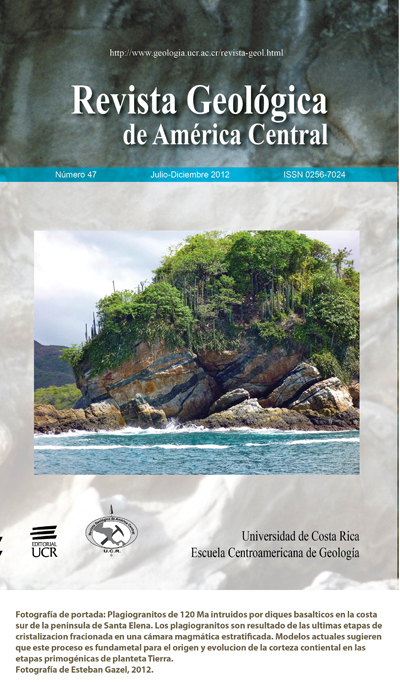Abstract
This paper describes petrographically and genetically, a number of peperites, as examples of spatialand temporal coexistence of magmatism and sedimentation in Costa Rica. The cases are presented in basic igne-ous complexes (ophiolites), mixtures varying from incomplete (megablocks of radiolarite with diabase in the NicoyaComplex) to complete mixes in various stages of Maastrichtian-Paleocene (Golfito Formation) or Paleocene pelagiclimestones with basalts (Quepos Subcomplex or Tulín Formation) to form brechoid and pillowed peperites. Within theOligo-Miocene arc, there are examples extended along the Talamanca range and its foothills, as well as Sarapiquí’splains represented for brechoid and bulbous (fluidal) peperites in latiandesitic lavas (Pacacua Formation) or brechoidpeperitic pipes in ignimbrites (Mata de Limón Member) or possible brechoid peperites in lavas in the Crucitas min-ing prospect (Cureña Formation), or simple brechoid peperites in andesitic flow (Pacacua Formation, in Talamanca)or as hydroclastic breccias with fragments of dacitic composition in lava flow deposits of Carbonal Guanacaste, justbetween the beaches Cabuyal and Naranjo. All these rocks represented proximal equivalents of the explosive, effusiveand subvolcanic volcanism (endogenous domes and criptodomes) and his concomitance with the fluvial sedimentation.In Quaternary period, we have a sample in the base of Tiribí Formation in contact with Palmares Lacustrine. Also thispaper included possible and potential cases. It hopes that the description and interpretation of this type of rocks helpsto its identification in other regions of Costa Rica and Central America in general, as well as a potential source for theexploration of valuable metals.






